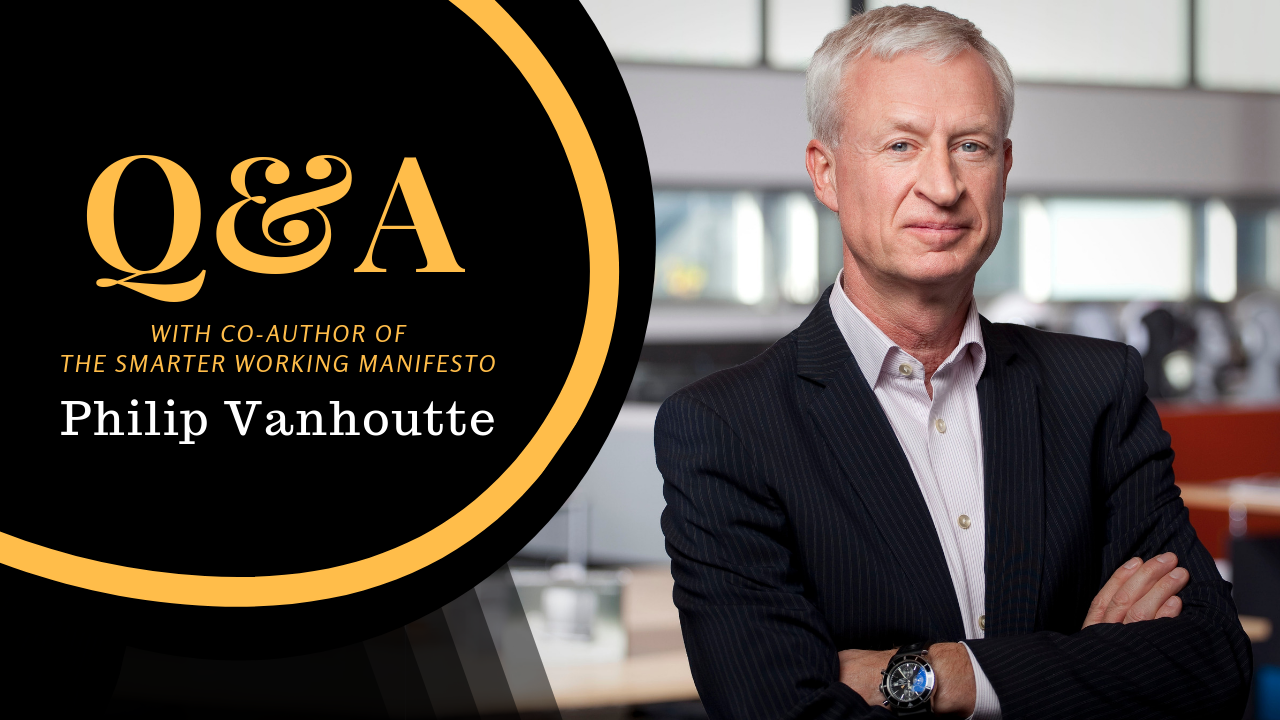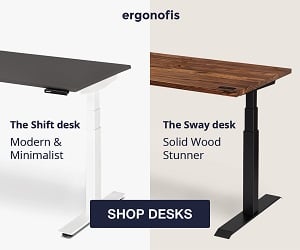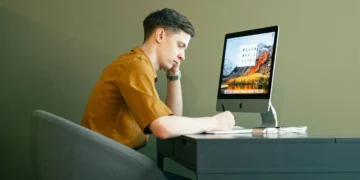Philip Vanhoutte, co-author of The Smarter Working Manifesto, discusses ways to improve wellbeing by integrating nature into our working lives.
In addition to encouraging workers to spend more time outdoors, workspace operators must also improve the inside of their space, starting with acoustics.
Being in rooms that have no view of nature is scandalous. The only time people should be in boxes without windows is when they are dead — Philip Vanhoutte.
Philip Vanhoutte is a leader in the workplace wellness movement. Co-author of The Smarter Working Manifesto and co-founder of Ozadi, a movement to integrate nature into our work lives, Vanhoutte is on a mission to teach workspace operators about foundational wellness elements of space design.
Allwork.Space chatted with Vanhoutte about the importance of listening to what people need from a space, including nature in your workplace palette, and getting space acoustics right. Here are the highlights of our conversation.
Allwork.Space: I’ve seen you at GCUC now a couple of times, in London and Denver. I’m always quite inspired by your work around wellness. How did you come into the field of workplace wellness and human potential?
Philip Vanhoutte: It all started in 2008 with the economic crisis. At that point in time, I was asked to basically collapse three buildings into one in the UK. Of course, you can do this in the — dare I say — stupid way by just squeezing more people into tighter spaces. I wasn’t going to do that.
We sent out the Leesman employee workplace satisfaction survey that asked what people do, where they do it, if they’re well supported in doing it and, if not, what we should do about it. That was a big data tool that was listening with elephant ears to all the employees.
So many insights came out of that, that we basically had the spec for a good, supportive environment. Give them a physical space where they can do their jobs; give them the technology that is right for them; and, last but not least, give them a human environment with a culture, an appreciation of ergonomics, and wellbeing support.
We then presented the new design to the employees and asked if they thought it would help them. Through the mechanisms of listening, the bosses had the finest appreciation of what people are doing. Out of that came the big, big message that acoustics are just not good enough. It was a problem area and we had to fix it.
Allwork.Space: You’ve spoken about the emergence of 21st century workaholism and the need to address it. What have you observed and what would you like to see?
When I noticed workaholism happening in companies I worked with, I got in touch with the Mentally Fit Institute. I learned that there are aspects of mental wellness. There’s a physical aspect, a cognitive aspect, an emotional aspect, a spiritual aspect. All these aspects are like batteries and they all need to be charged. If one battery is low, it’s going to upset the others.
I noticed that we had people inside all the time. I wanted to get us into nature more. From a personal point of view, I hated being in conference rooms without windows. At one point, we had a sales meeting at Lake Tahoe, with 100 of our sales people, and we were going to be in hotel ballrooms for three days. I took the entire sales team from Europe down to the beach for our meetings. We had easels on the sand. It was fantastic.
Another time in Montreal we were, again, going to be underground. I hired a boat and we had our meetings on the deck of that boat. Being in rooms that have no view of nature is scandalous. The only time people should be in boxes without windows is when they are dead.
Allwork.Space: As we put more emphasis on workplace wellness, what have you seen in the shared workspace landscape?
Agile working has been around since 1989. It was inspired by tech companies with employees working from home. With coworking, people are capable of getting out of the office cage. Stage one of flexible working was driven by the effectiveness of everyone being there; stage two was driven by technology; stage three was driven by cost — companies had to let go of buildings so more people started working from home so the company could save a buck; stage four was when coworking spaces started.
About five years ago, we found that we had a loneliness and disconnectedness problem, and that became a top agenda item. Those are the stages of agile work that I see and my duty is to experiment and let people know the results of that.
Allwork.Space: We’re seeing a rise of coworking spaces focused on wellness, with in-house yoga, massage, meditation rooms, gyms, nap pods. From what I’ve heard from your talks, however, wellness is more organic than simply having amenities. What’s your perspective on the wellness trend?
It should all begin with what the job demands. For instance, if you work in a laboratory, you can’t take your equipment into your kitchen, or into nature. But if you’re doing customer interaction, you can do that from home. For me, it’s all driven by job preferences and individual preferences. Every organization needs to do a location independency suitability analysis. Then they have to have a palette of ways people can work.
You need to get away from spending all your time with the same people. Coworking spaces are the source of diversity, creativity, a different point of view. At the same time, working from home is good and working in nature is good. I call this workspace portfolio management. In all of these spaces, acoustics have to be right. In all of these spaces, you need to have nature and find ways to bring more nature inside.
If you asked me what the challenge around this is, I’d say that the human dimension of organizations is not very well understood. The best way for managers to drive professionals is to give them autonomy, the space to demonstrate competency and the freedom to connect with others inside and outside the organization to grow and innovate.
Coworking spaces can be talent gardens where people appreciate where they are in their lives and the spaces can yank them up and get them to the next level. I strongly believe that coworking spaces are the talent gardens. It’s a mix of the rational aspects of companies and a business mind, with an understanding of the human dimension.
Allwork.Space: In Denver, you challenged workspace operators, saying their spaces fail to correctly address acoustics and noise management. How are we, as the coworking movement and industry failing, and what can we do to remedy it?
It’s not just coworking spaces. All workspaces have this issue, with three out of four people saying they can’t do their job properly because of noise problems. A couple decades ago, we went from cubicle land and office land to open offices. The theory was that we’d be collaborating better and the financial people wanted to save money.
One issue we had with this was that architects started designing for the eye. The attributes of new buildings were glass, with lots of rectangular stuff, indoors and all that. Architects have not been educated to design for our ears as much as for our eyes.
Most of the cool offices, on the day they open, are already not well done. And the companies are out of money so they try to patch it a bit, but it doesn’t work. Sound masking systems that sound like air conditioning don’t work. The better sounds that relax people and dovetail with their work are the sounds of nature. You can pipe nature sounds in; or include things like waterfalls in the space; or have skylights that let nature in.
If you blend nature sounds with good sound absorption and blocking the sound of people directly around you, that’s the most advanced strategy. If people go into office spaces and put on headphones just to get away from the sounds, that’s a failure.
Human beings are just sophisticated animals and we’re not designed to have people talking so close. It’s out of our comfort zone. It’s this human dimension and it’s very poorly appreciated in workplaces. We have a reptilian brain that is distracted by the ding of a phone or the guy talking next to you, and it’s very hard to get to a place where the thinking or technical brain is working.
Allwork.Space: Acoustics is really a foundational piece of designing workspaces that work, regardless of the size.
Coworking spaces that want to attract enterprise businesses need to understand that large organizations now know about this stuff. They’re going to come along and say that the noise situation is not good. They have health and safety standards that they have to obey.
I feel it’s my duty to inform coworking operators about these foundational elements of physical spaces so we don’t go back to enterprises wanting to put people in offices. People should be working in coworking spaces for the reason of innovation, but they need to get the foundational elements of workspace right from the beginning.
Allwork.Space: Thanks, Philip. What are you working on right now that we should know about?
I’m making sure the competency and skills further improve in the coworking spaces that are available. There’s a lot to be learned and I want to make sure that the good ideas around nature and wellbeing are there. If we don’t, what’s the point?


 Dr. Gleb Tsipursky – The Office Whisperer
Dr. Gleb Tsipursky – The Office Whisperer Nirit Cohen – WorkFutures
Nirit Cohen – WorkFutures Angela Howard – Culture Expert
Angela Howard – Culture Expert Drew Jones – Design & Innovation
Drew Jones – Design & Innovation Jonathan Price – CRE & Flex Expert
Jonathan Price – CRE & Flex Expert














